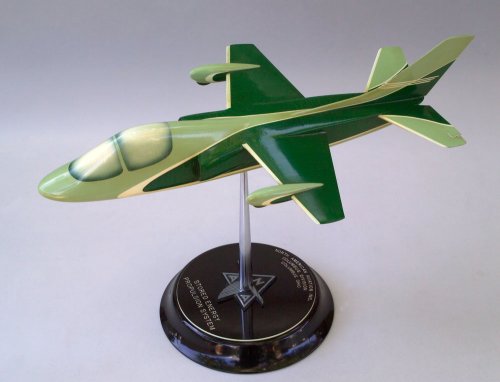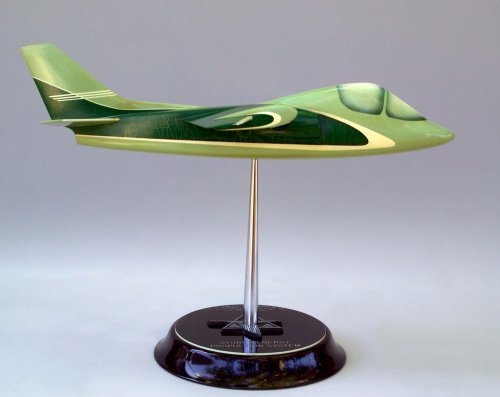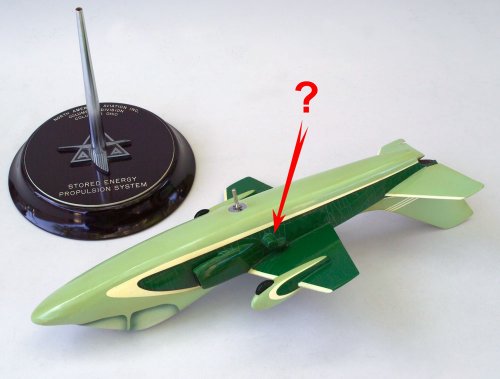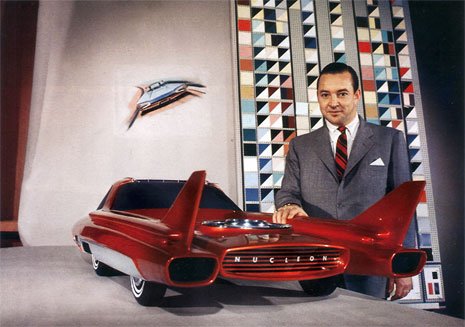- Joined
- 31 May 2009
- Messages
- 1,154
- Reaction score
- 677
I hope everybody else knows about this, and has lots of supporting documentation to post... This display model represents a small, single-seat, single-engine, proof-of-concept jet aircraft by North American Aviation (Columbus, Ohio division), designed to demonstrate the Stored Energy Propulsion System.
Was that some kind of rubber band? A bag of hot air? Steak and eggs? Even JP4 is technically "stored energy", so the designation is rather cryptic. The only unusual feature visible on the model is a pair of odd-shaped, side-mounted protrusions that is also an enigma (to me) -- see red arrow on picture 3.
Was that some kind of rubber band? A bag of hot air? Steak and eggs? Even JP4 is technically "stored energy", so the designation is rather cryptic. The only unusual feature visible on the model is a pair of odd-shaped, side-mounted protrusions that is also an enigma (to me) -- see red arrow on picture 3.





